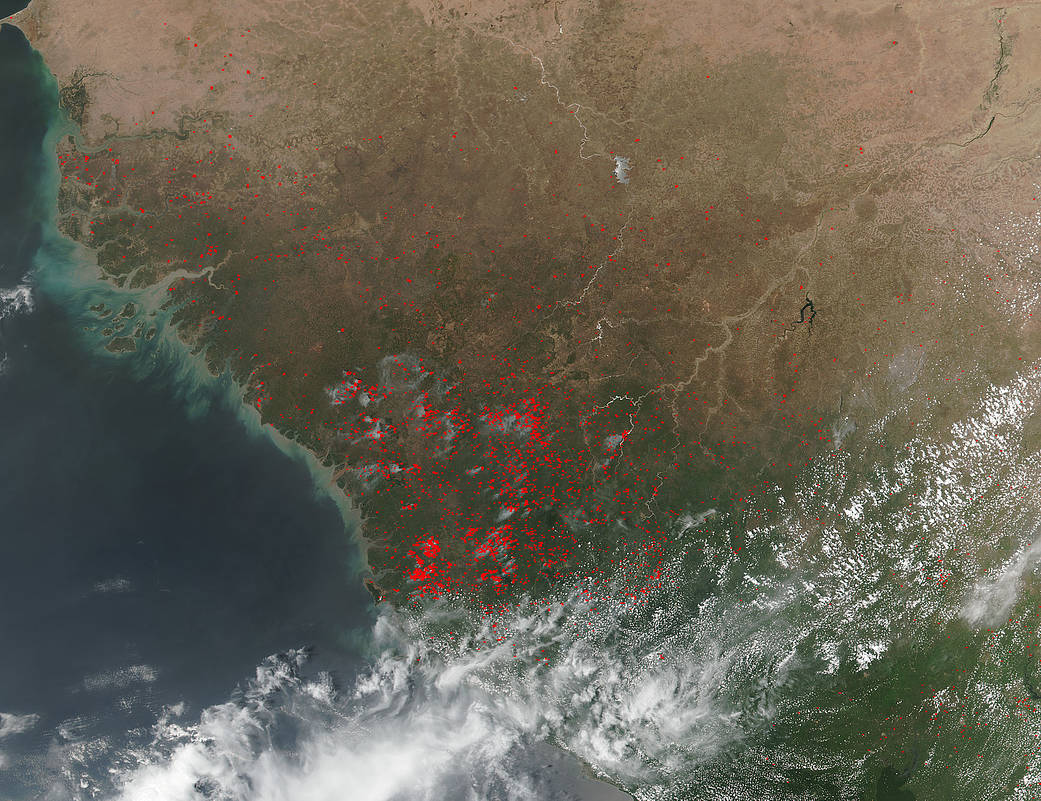Naturally occurring fires are not uncommon in the drier forests and grasslands of West Africa, but the fires in this image taken by the Suomi NPP satellite on April 08, 2017 are almost certainly a product of human activities. At this time of year is it not uncommon that some fires are intentional, set by people to clear forest, savannas, and grasslands for ranching or farming. Of course, other fires can occur accidentally from human activities. In addition, landscapes that have been disturbed by logging, fragmentation, or previous accidental fire are more prone to catch fire. In these situations, planned (or prescribed) fires (such as brush clearing fires on already cleared land) can easily get out of control and invade other areas.
Each hot spot, which appears as a red mark, is an area where the thermal detectors on the VIIRS instrument VIIRS (Visible Infrared Imaging Radiometer Suite) onboard Suomi NPP recognized temperatures higher than background. When accompanied by plumes of smoke, as in this image, such hot spots are diagnostic for fire.
NASA image courtesy Jeff Schmaltz LANCE/EOSDIS MODIS Rapid Response Team, GSFC. Caption by Lynn Jenner
Suomi NPP is managed by NASA and NOAA.


























